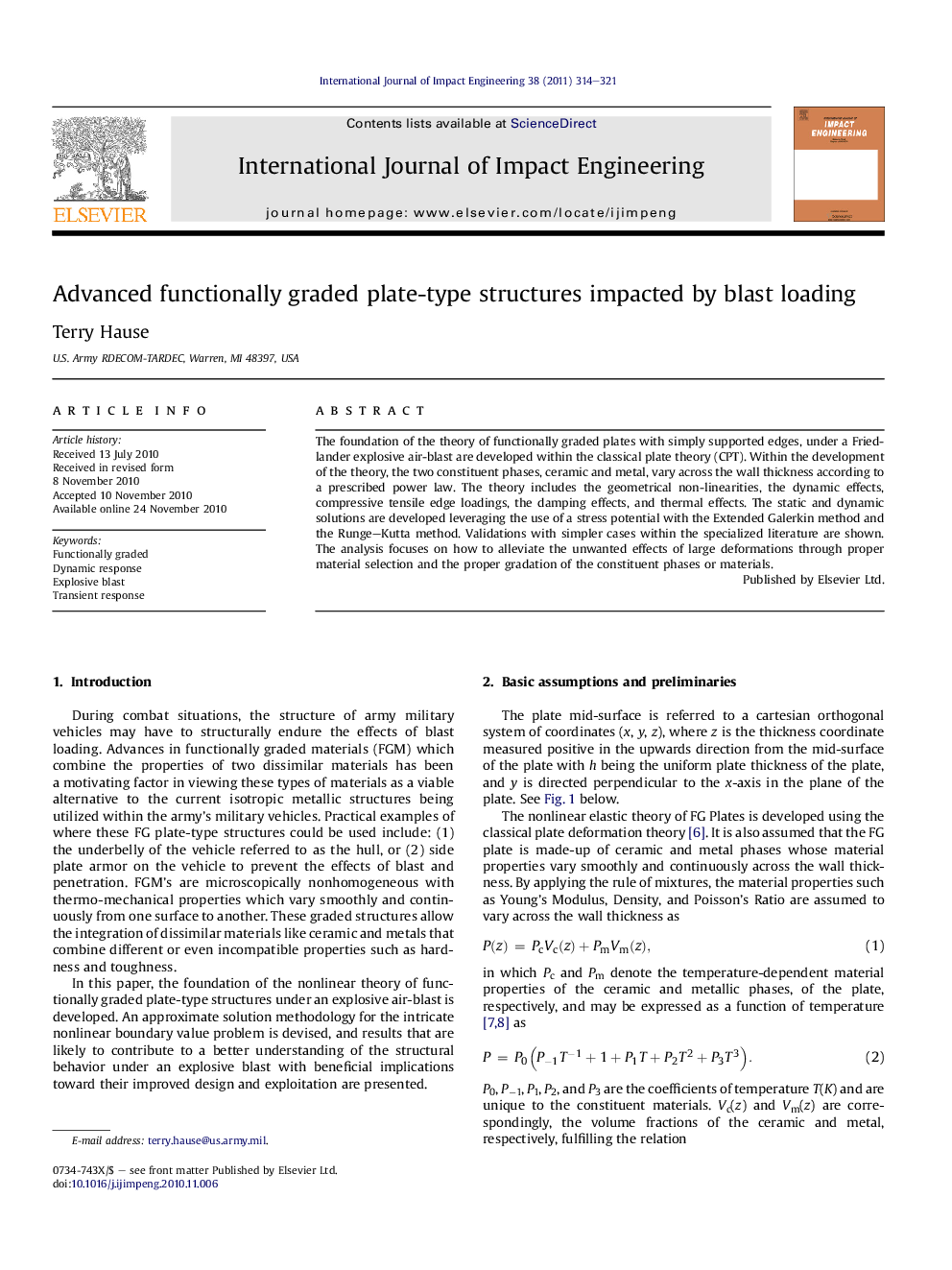| Article ID | Journal | Published Year | Pages | File Type |
|---|---|---|---|---|
| 778685 | International Journal of Impact Engineering | 2011 | 8 Pages |
The foundation of the theory of functionally graded plates with simply supported edges, under a Friedlander explosive air-blast are developed within the classical plate theory (CPT). Within the development of the theory, the two constituent phases, ceramic and metal, vary across the wall thickness according to a prescribed power law. The theory includes the geometrical non-linearities, the dynamic effects, compressive tensile edge loadings, the damping effects, and thermal effects. The static and dynamic solutions are developed leveraging the use of a stress potential with the Extended Galerkin method and the Runge–Kutta method. Validations with simpler cases within the specialized literature are shown. The analysis focuses on how to alleviate the unwanted effects of large deformations through proper material selection and the proper gradation of the constituent phases or materials.
